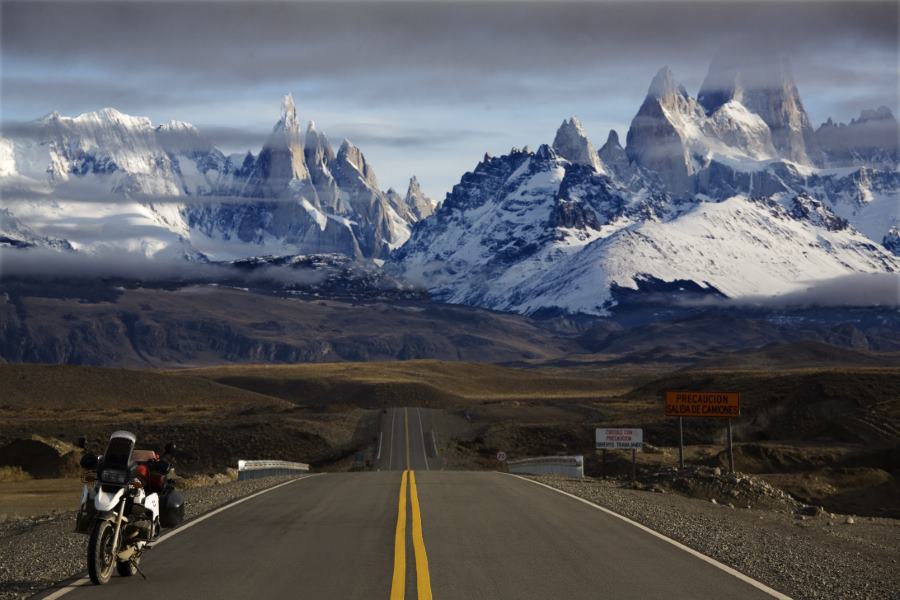|
@backofbeyond - I highly respect your wizdom on a lot of things. I can also somewhat agree that the Himalyan is a good and quite capable bike for its price point. It has proven itself and has also been improved upon. I can also agree that being able to flat foot a bike is better than not. But, neither is the point I'm trying to make.
The point is that for this ammount of money, there are better options - several which are Japanese dual sports. The other point is that "reach" is one of many bike attributes thad may have to be traded for another (you can't allways have it both ways). In this particular case it is "reach" vs "nimbleness".
As for a bike made for the workshop. Sure, the Himalyan is simple to work on when compared to many high tech bikes on the market today. But, working on a basic Honda like the CRF is not like working on a space shuttle - it is quite simple as well. Even a noob to a wrench should not shy away against turning it on either. I don't think the "wrenchability" difference in this case is large enough that it should influence the choice.
As for durability - I'm unsure. I'm confident that the Honda will at a bare minimum do atleast 50.000,-/kms before anything major will have to be done to it, and probaly double that (i.e. a top end rebuild... which really sin't all that difficult on a thumper - even for a noob). The Himalyan has its robustness and simplicity going for it - but it is allmost an entirely new "platform" from ground up, with little inheritance (here yyou must conscider that most of RE's other bikes were some sort of relative to the Bullet - which we all must agree is very much absolete on most performance attributes).
The Himalyans seems robustly built. In the early versions there were several reports of the bike braking in half (near the steering). Ofcourse they have remedied this "ages" ago. You are probably right on this point though - the Himalyan can withstand a beating better than a bike that was built to be light. But, keep in mind - the Himalayan "platform" (and just about everything on it) is allmost entirely "new" design - from the ground up - to catch up from decades lying behind with the Bullet, etc. The new RE is not tried and tested to the extent of the dual sports that has descended from a very long heritage of similar bike (i.e. the Honda CRF).
The CRF - is based on generations of continuous improvement from Honda. The CRF is also made by the manufacturer in the world that produce more bikes than anyone out there. Hondas are in general reputed to be the amongst the most reliable bikes, and for not going crazy by trying to squueze too much juice out of every bike - leaving a great deal of safeguards against obuse, etc. Further still - its tremendous world wide retail network assures access to both parts and knowledge accross the globe (not that the Royal Enfield network is terrible - but it doesn't come even remotely close). When it comes to predicting which bike is more likely to be operable most of the time, we have to look even beyond reliability, durability and parts accesability - we also have to conscider hthe degree of suitability for the type of riding the bike is to endure..
The Himalayan might be built like a tank. But, it is a relatively heavy and "clumsy" tool in comparison to most dual sports on the market today. So, it is not only a matter of how durable the bike is in the event of let's say a crash - but also staying out of trouble in the first place. Being able to flat foot is only one of several attributes that may dictate the outcome.
Being able to flat foot a bike may help you in preventing you from dropping it - but so will a bike that is more nimble. If you are vertically challenged, it is a tradeoff-decisicon that usually will have to be made. That much said - there will most likely be cases where you won't be able to flatt foot a bike, regardless of how long your legs are. In these cases, having "sliding off the side of the saddle technique" thoroughly engrained, or a nimble bike - are the only two things you can pray on to save you. What happens if you find that you have to put your feet down while your wheels are on a 2-3 inch high protrusion in the terrain? Will your legs be too short to catch the toppling bike?
Sure, every inch of leg counts when trying to make the reach - long legs is a good thing to have. But, if you are to venture off road, and you don't know how to ride or stop a bike without reaching the ground with both feet - you will topple a whole lot more often than if you did. And, when you have learned this teqhnique, plus/minus and inch or two won't make a huge difference. Sure there comes a point when reach becomes a real struggle - I'm not saying it doesn't matter. What that point is is however highly personal snd depends on a lot of factors (experience, physique, what type of terrain to be ridden and in what manner, as well as other bike charactersitics than simply height). Take a trip to the local MX track and look at all the teens riding horses so tall that they can't even reach the ground on even one side without sliding way out of the saddle. They all have the option to go for a shorter horse. The reason they don't is because the horter bikes simply cannot do the same things as well as the taller ones (and in part because their parents buy them a bike they can grow into). Ok, so we are not spring chickens that plan to do acrobatics on our bikes - but travel at a leasurly pace. Still, the point about not fretting too much over a slight reach problem still stands.
Now, let's say you had to cross a rocky river bed with a bit of current in it. Let's say you had the option of riding a light nimble bike with a 21 inch wheel, great ground clearance, great suspension for the task, and allmost perfect offroad ergonomics (CRF) ... or you could take another piece of equipment that also had 21" wheel, but that was coomparativekey far heavier, relatively more "clumsy" and with far poorer offroad rider ergonomics, poorer suspension, and less ground clearance??? Which would be the best tool for the job, even for a person that stuggled with reach on the first choice of bike?
Even though one could flat foot the Himalayan and barely reach on the CRF - I'd bet that the one riding the CRF would be the one most likely to get across without getting into the drink. In a river crossing scenario, attempting to paddle the bike across rather than riding it standing up might be your worst option. The same goes for a whole lot of other scenarios you may encounter once you leave tarmac. I.e. like going up or down a steep gravel road in terrible condition (ruts or rocks). In such cases, being able to flat foot may do didly for you. If you at all would be so lucky to not drop the bike, or get into a more serious accident - you will have to face the problem of getting going again with twice the hazard. What matters most is being able to traverse obstacles without having to put both your feet down in the first place. Simply being able to "dab" one foot is all that is really necessary.
As for traversing terrain, the Himalyan should be more than adequate in most cases - insignificantly inferior to the dual sports. But in other cases, the difference will be more than noticeable.
I felt that I had to voice my opininon of "reach" because too many voice the opposing view view. Many that voice the other are just parroting what the masses are parroting - because they believe the masses must be right. I mean, who can blame them - a thousand "Yay-sayers" must be more right than the one single "Nay-sayer" - right? The problem in this case is that the original source derives predominately from riders who has hardly ever left the tarmac - like the teacher at drivers ed! The eccho chamber of parrots has turned this craze of "it is really important that you can flatfoot your bike" into a false truth... well, not entirely false, but far more than is justifiable (leg length matters... a bit). So, when people try to sell someone into the idea that being able to flat foot a bike is one of the most important attributes to look for in a bike, my answer to that is: "Maybe, but probably not".
On a final note - I just don't know how a 30" inseam translates in practical terms on the CRF vs the Himalayan - i,e the seat width of each, etc. So, I should be careful to sell the CRF as the right bike for someone with a 30" inseam. In the end I hope there is a a cent worth of wisdom in all this rambling of mine, and that I do not just come across as argumentative or as a guy with a broken record. In the end, either bike may prove to be the better option for this particular person. Just don't be affraid to question any predispositions regarding "reach" (one way or the other). It may matter a lot or nothing at all when all decision criterias are conscidered.
|

















 10Likes
10Likes










 Threaded Mode
Threaded Mode








